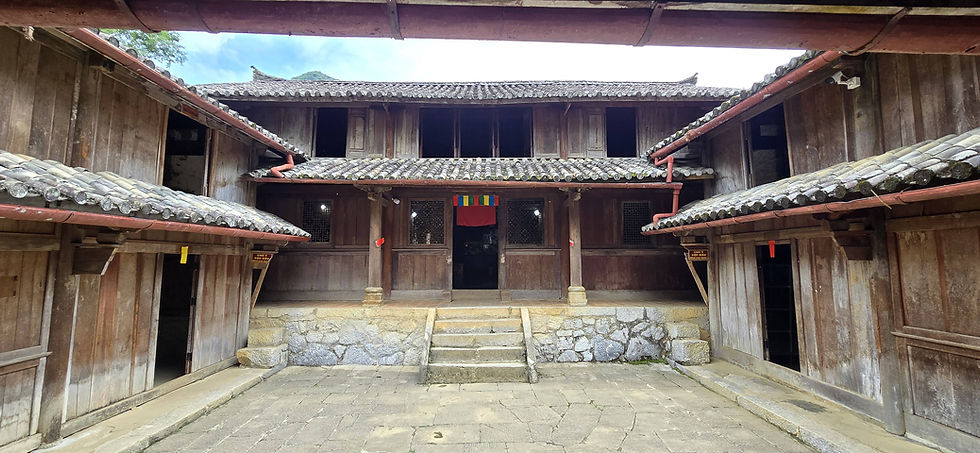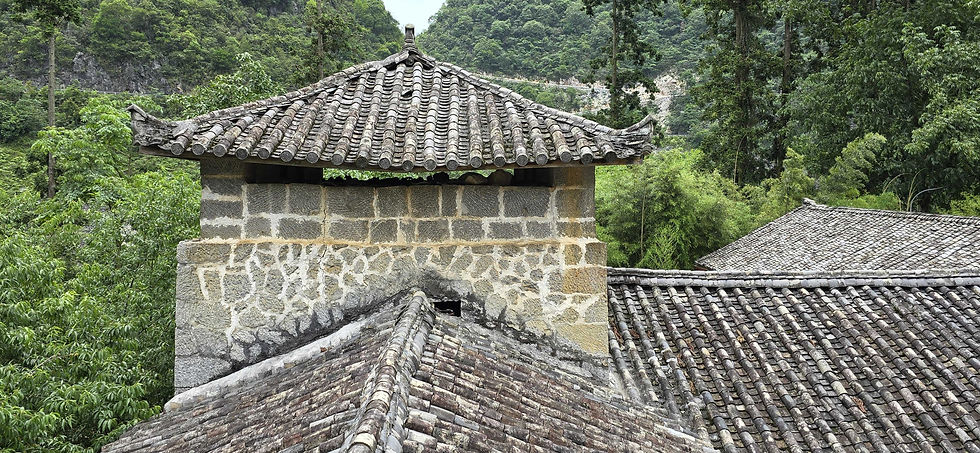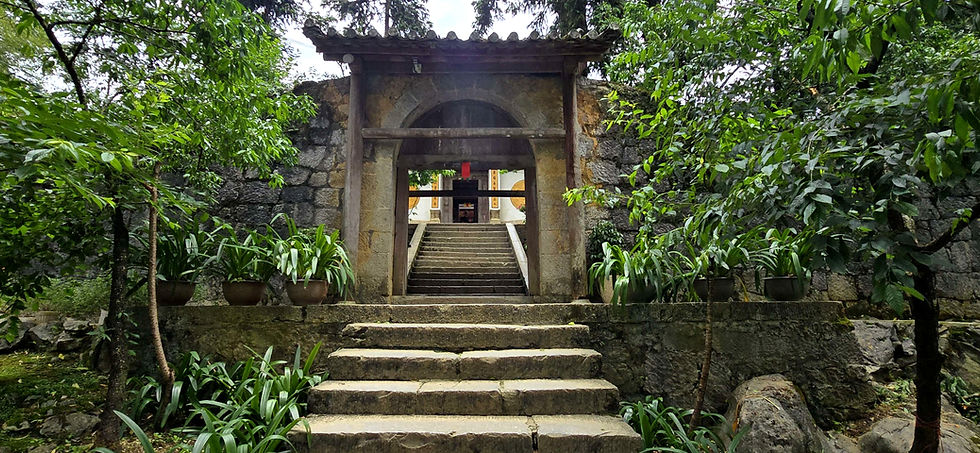H’Mong King Palace - Fortress of the Opium King
- Shannon
- Jun 23
- 4 min read
Deep within the misty limestone mountains of Vietnam’s northern highlands, the H’Mong Kings' Palace stands as a solemn relic of power, ambition & tribal legacy. Also known as the Vuong Family Mansion (Dinh Vua Mèo), construction commenced in 1898 under the directive of H’Mong leader Vương Chính Đức, a powerful warlord and opium King. The palace served as the seat of power for his family, who were regarded as royalty by the local H’Mong people during French colonial rule. Located in the isolated Sa Phin Valley of Ha Giang province, this stone & wood fortress is an architectural blend of Chinese Qing dynasty aesthetics and indigenous H’Mong construction methods. The estate sprawls over 1120 square metres and is divided among three distinct courtyards. These courtyards house over 60 rooms, each serving specific functions ranging from ceremonial gatherings and family living quarters, to servants’ spaces and opium storage.

No expense was spared and skilled craftsmen from China were brought in to construct the mansion. The entire complex is shaped like the Chinese character for "king" (王) and is framed by fortified stone walls made from locally quarried green stone. The elaborate woodwork, all hand-carved with intricate motifs like dragons, phoenixes and other symbols of power, was crafted from the rarest of woods such as teak and ironwood. The high stone walls which protect the palace are crowned with watchtowers, each adored with deadly wooden stakes and narrow slits for archers, a reminder of the era’s volatile clan conflicts and the ever-present threat of violence. After nearly 9 years of construction and the undocumented deaths of countless workers, the palace was completed in 1907 and became one of the most prominent architectural landmarks of the early 20th century. The total cost to build the palace was estimated to be around 15,000 rare white-silver coins, equivalent to 9 million AUD today.

The trough in the corner of this courtyard was used by the kings wife, to bathe in goats milk
With financial support from the French, who sought to maintain influence in the region by empowering local leaders, Vương Chính Đức was a formidable and complex figure, equal parts tribal leader, opium lord and diplomatic strategist. His rise to power in the late 19th century was anything but clean. As the patriarch of the influential Vuong family, he capitalised on his tribe’s geographic isolation and deep-rooted traditions to consolidate power in the Dong Van Plateau. While he never held a formal title recognized by the Vietnamese monarchy, his dominion was acknowledged by both the French colonial regime and regional authorities, who saw value in keeping a strongman in charge of the volatile borderlands.

One of the darkest stains on Vuong Chinh Duc’s legacy is his deep involvement in the opium trade. The remote highlands of northern Vietnam became a lucrative source of income for him and his family and they amassed considerable wealth. He oversaw large-scale cultivation and trading operations, turning his palace into a regional hub for opium storage and commerce. French colonial authorities, seeking to benefit from the opium economy themselves, struck a deal, allowing him autonomy and supporting the construction of his fortified palace in exchange for loyalty and cooperation. This alliance allowed him to amass great wealth, military power, and political leverage, but it also cemented his role as a drug baron rather than a noble tribal patriarch.

Stories from the time also point to his rule as being strict and brutal, his punishments for disobedience were severe. His private militia enforced his rule and many enemies or smugglers who crossed him vanished without a trace. Vuong Chinh Duc was also deeply strategic. He understood that to maintain his dynasty, he needed to play all sides. While working with the French, he still retained fierce loyalty among the H’Mong, positioning himself as both protector and benefactor. He reportedly collected tributes from smaller clans and used his wealth to build schools, buy weapons and maintain a quasi-royal court within the palace walls.

Today, the H’Mong King Palace is protected as a national cultural heritage site and stands as a poignant symbol of H’Mong identity and resilience. Vuong Chinh Duc built a dynasty, not just with architecture and iron-fisted influence but with opium and blood.

Location : Sa Phin Valley, Lung Phin Commune, Dong Van District, Ha Giang, Vietnam
How to get there : The village is located approximately 130 km's from Hai Giang city and will take at least 4 hours to reach by car. Many travel agencies offer multi-day tours around the famous Hai Giang loop that include a visit to the palace and other natural sites in the region, giving you better bang for your buck. We did a 5 day/4 night motorbike tour for $500AUD (which included food and accommodation)
Attraction Info : The palace is open daily from 7:30am - 5pm and tickets cost 25000VND per person. Given it's distance to the nearest main town, it might be worth staying in the area overnight. There are many homestays around the palace, which cost next to nothing.
Thanks for reading H’Mong King Palace - Fortress of the Opium King. Check more destinations here!
































